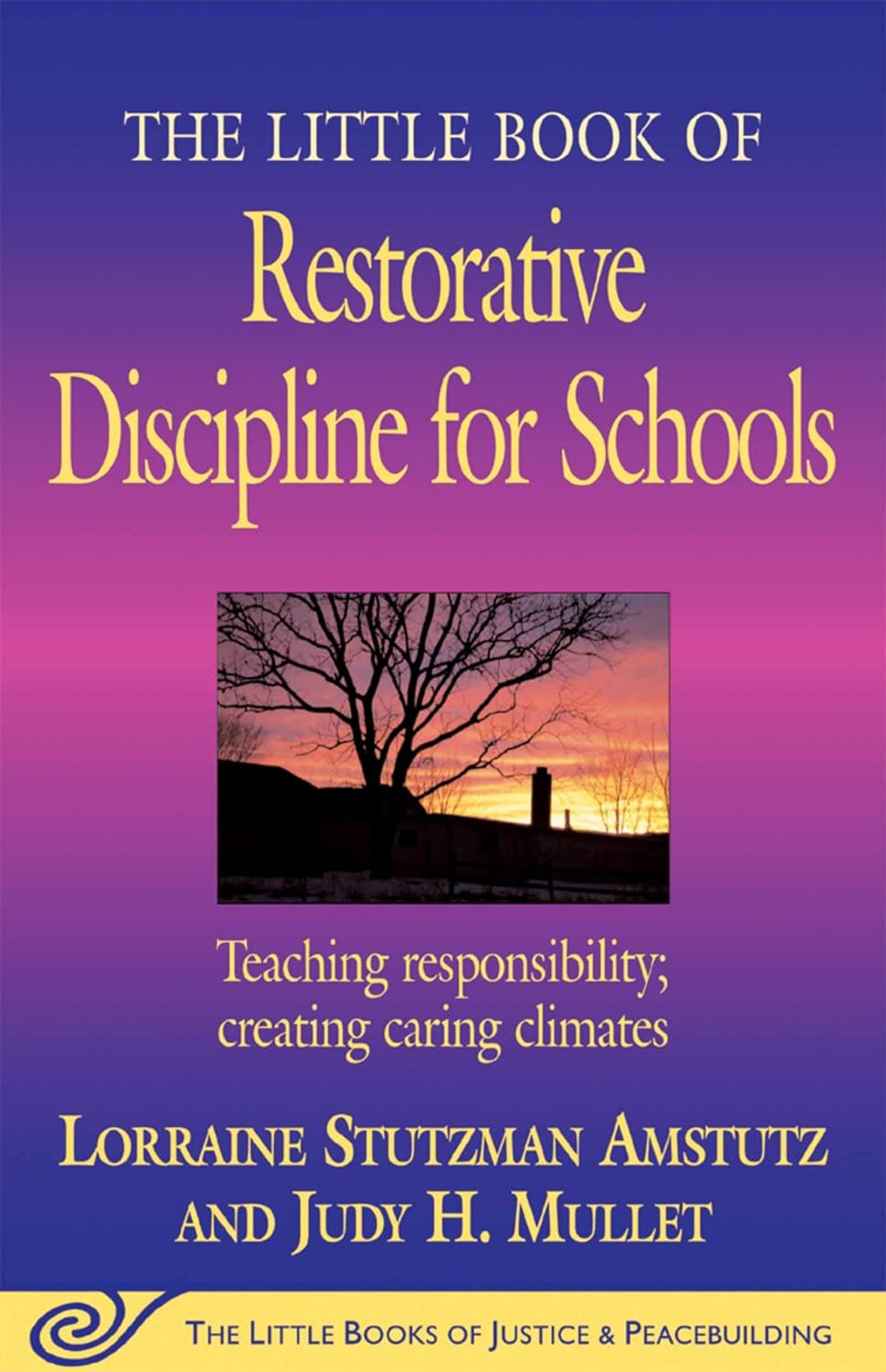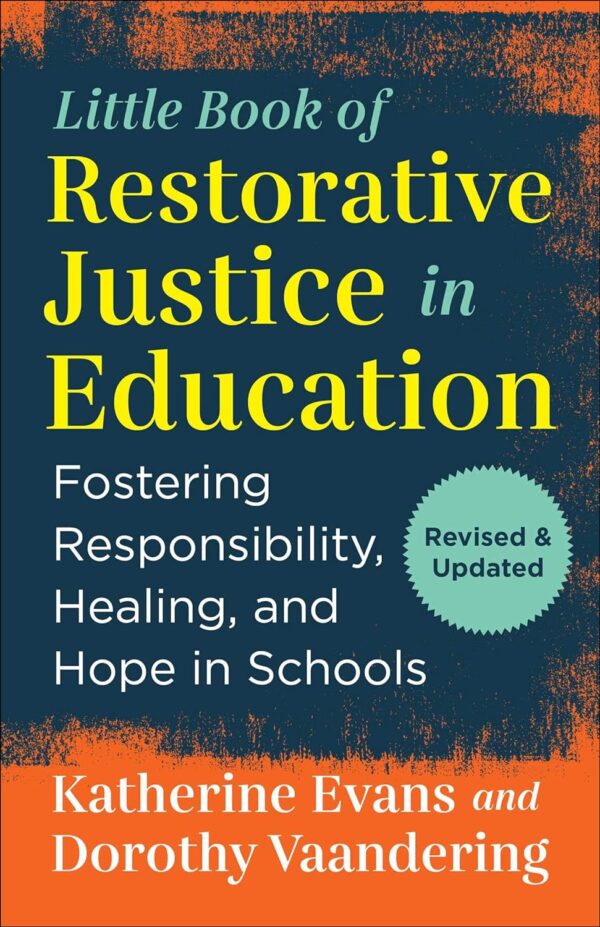How can teachers and administrators better deal with discipline, punishment, bullying, truancy, and other issues? Can community-building begin in a classroom?
The authors of this book believe that by applying restorative justice at school, we can build a healthier and more just society. With practical applications and models.
Can an overworked teacher possibly turn an unruly incident with students into an “opportunity for learning, growth, and community-building”? If restorative justice has been able to salvage lives within the world of criminal behavior, why shouldn’t its principles be applied in school classrooms and cafeterias? And if our children learn restorative practices early and daily, won’t we be building a healthier, more just society? Topics include:
Why restorative justice
The role of discipline and punishment
Characteristics of peaceable schools
Flexible policies
Whole school training approaches
Class meetings
Truancy mediation
Bullying
And more!
Two educators answer yes, yes, and yes in this new addition to The Little Books of Justice and Peacebuilding series. Amstutz and Mullet offer applications and models. “Discipline that restores is a process to make things as right as possible.” This Little Book shows how to get there.
Reviews:
Excellent and inspiring overview to restorative practices that will serve our team well as we consider how to move toward implementation in our school. Concise addresses all major concerns and potential points of resistance in practical ways. The last section on the idea of community compels us forward. (Amazon reviewer, 2020)
This book was clear and concise. It gives good insight to restoring discipline and the steps one should take to do this. It places the responsibility on the whole as well as addressing the key roles we each play in the restoration of discipline. This book was not a long read but it made a BIG impact! (Amazon reviewer, 2015)




Reviews
There are no reviews yet.